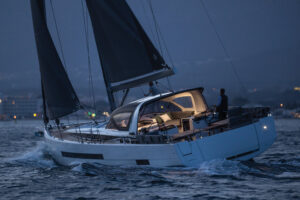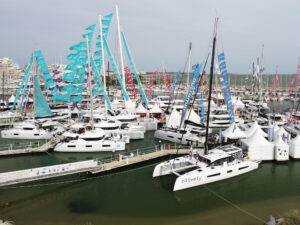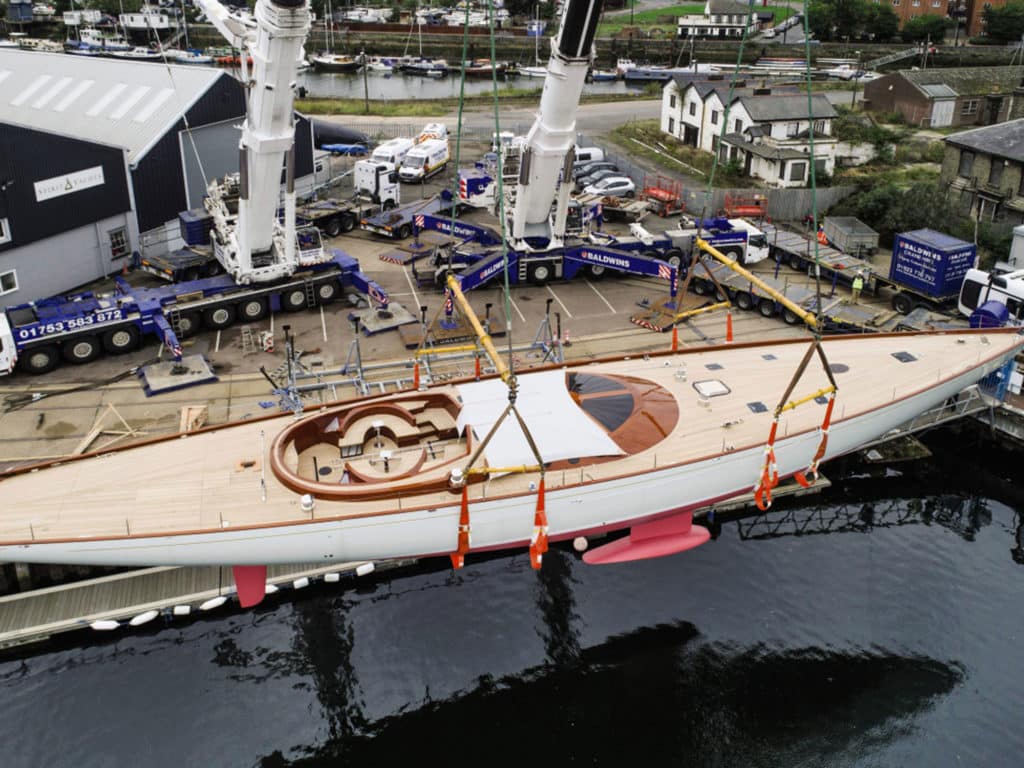
Superyachts aren’t typically the first things that come to mind when terms such as “sustainable” or “environmentally responsible” get bandied about. But, as with many things related to building custom-designed boats, much hinges on the design brief.
Take, for example, Spirit Yachts’ magnificent-looking Spirit 111, which was commissioned with a brief that challenged the UK-based builder to create “a Tesla of the seas” while also embracing sustainability and stealthy eco-friendly features as its reasons to be. Much like upscale terrestrial Teslas, the Spirit 111, which was launched in 2019, achieved this lofty goal without compromising aesthetics, luxury appointments or sailing performance.
The Spirit 111′s sustainability efforts start with a hull that’s built using wood and epoxy on a stainless-steel space-age frame. “The research into materials and technologies was Spirit’s efforts,” explains Nigel Stuart, Spirit Yachts’ managing director. This began with timber selection. “The majority of the hull is made from Douglas fir from Canada, where the forests are tightly managed and heavily regulated.” These timbers were Forest Stewardship Council-certified, and Spirit Yachts took the additional step of conducting one-on-one conversations with foresters and timber-mill operators to thoroughly vet the supply chain.
While “green” epoxies weren’t readily available during the Spirit 111′s build, Spirit Yachts found other important ways to channel Elon Musk-like thinking. These include four BMW-built 40-kilowatt-hour lithium-ion batteries and a 100 kW Torqeedo-built electric motor that—while the yacht is sailing—harnesses the Spirit 111′s spinning prop and drive shaft to repower the batteries using regeneration.
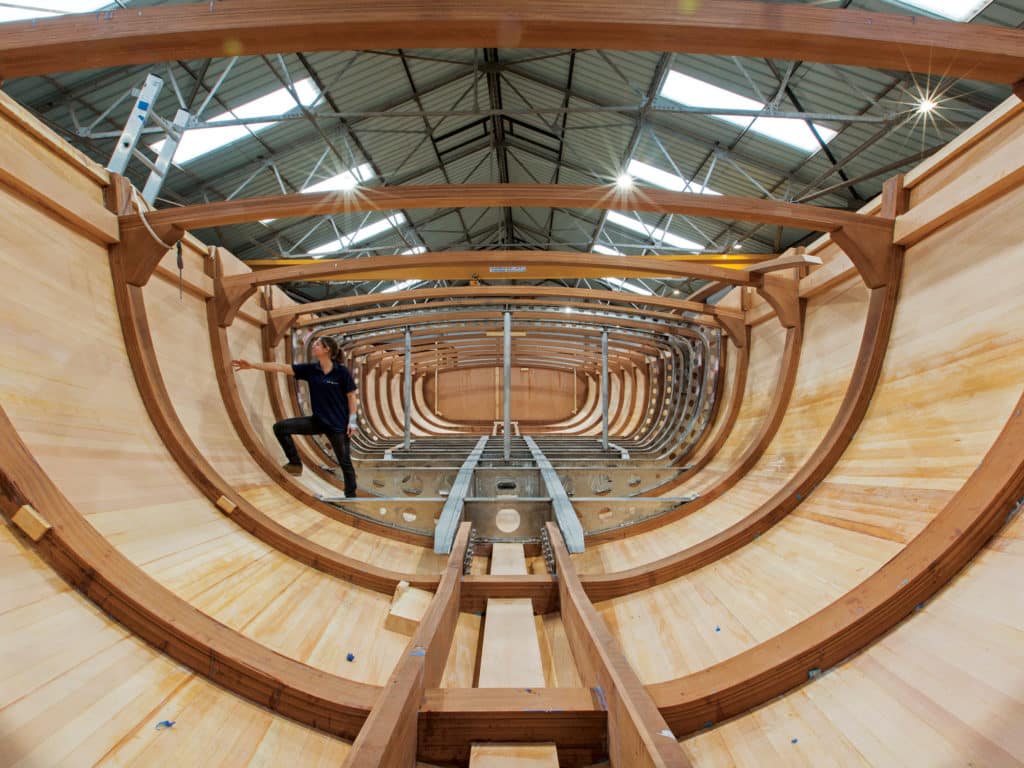
“At the time of the build, the drive system was a new product for Torqeedo, and it was designed for Spirit but with other yachts also in mind,” Stuart says. Since then, Torqeedo added this drive to its standard menu, meaning that the Spirit 111 project helped spur a next-generation product for other similarly minded owners and builders.
Lighting and air conditioning represent greedy power draws aboard most superyachts, but Spirit Yachts employed LED lighting, motion detectors, a variable-speed air-conditioning system, and a smart control system (think Nest thermostats) to trim electrical consumption where possible. “The system is smart by turning off unwanted lights automatically,” says Stuart, adding that the yacht’s sensors detect where sailors are and provide appropriate lighting.
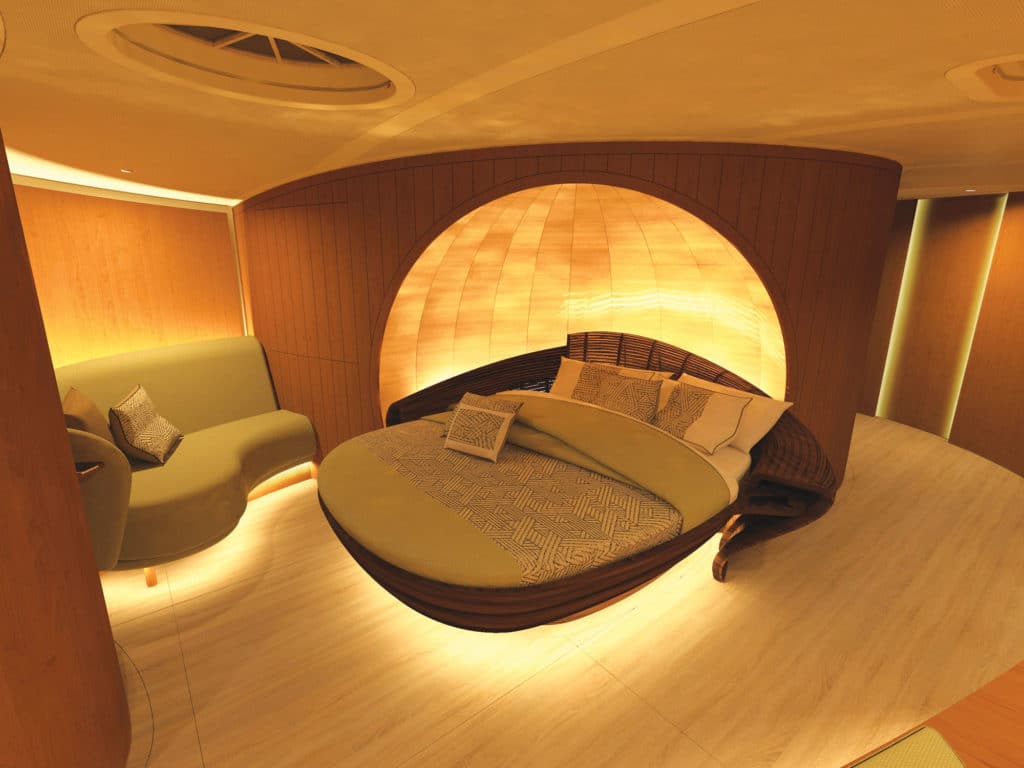
The combination of a smart system and variable-speed air-conditioning equipment means that the Spirit 111 can comfortably operate at anchor for up to four days without having to power up its twin 25 kW generators. Cooler still, the Spirit 111 can cross the Atlantic Ocean without consuming any fossil fuels, provided, of course, that there’s wind to power the yacht’s 4,843-square-foot sail plan, which is comprised of OneSails’ 4T Forte sails that are built using recycled sailcloth and handled by energy-efficient Lewmar hydraulic hardware. If there’s wind and the yacht’s underway, the crew just has to activate its regeneration system.
Given that the Spirit 111′s owner plans to extensively cruise and race the yacht, sailing performance was another important key to the project’s success. “The percentage of drag is around 5 percent,” Stuart says, explaining details about the regeneration system.
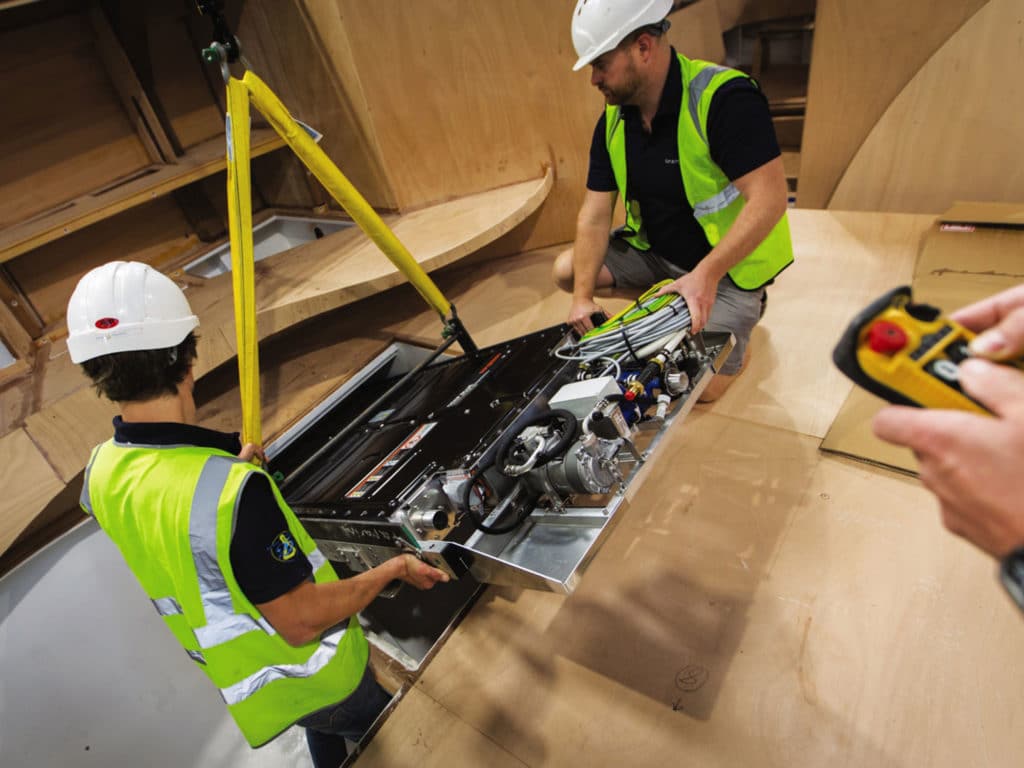
“As well as sustainability, central to the brief was the creation of a beautiful yacht with clean lines and hidden eco-features—hence no solar panels or wind turbines,” Stuart continues, drawing further comparisons between the sleek look of a Tesla and the Spirit 111. “The prop can generate far more kilowatts of power than wind or solar, so solar panels and wind turbines weren’t used.”
Finally, the Spirit 111 was fitted with an energy-efficient Webasto on-demand hot-water system, and Penguin Refrigeration’s UK-designed fridges and freezers that use highly efficient Cryogel insulation to keep the Chardonnay chilled and the gelato frozen, without having to overly tax the yacht’s lithium-ion batteries or fire up the generators.
Mix elegant design with innovative gear, and you can still live large while sailing green.
David Schmidt is CW’s electronics editor and occasionally reports on other topics from his home base in the Pacific Northwest.

